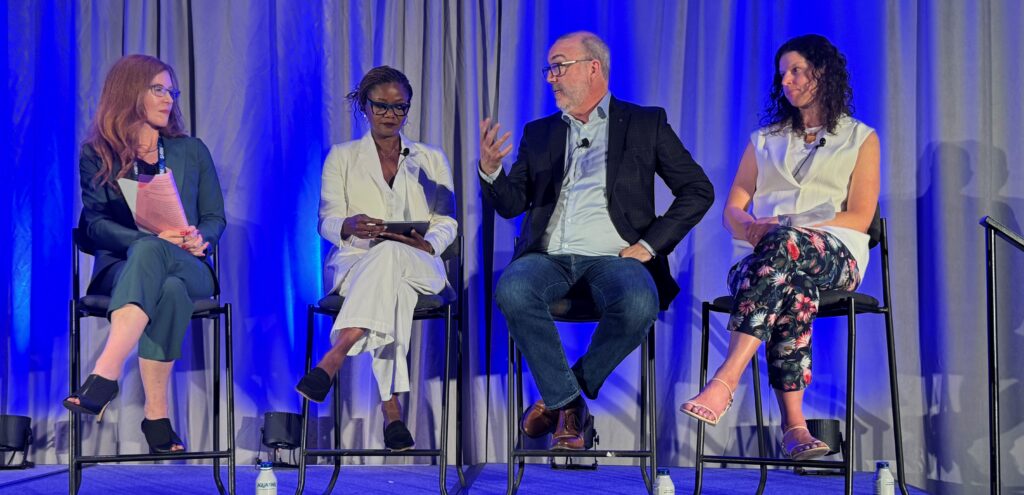Nonprofit Compensation: How to Compete with the For-Profit Sector
By Nanci Hibschman, Amanda Wethington and Michael O'Malley


The demand for higher compensation and greater pay transparency continues to increase and has placed pressure on all employers to respond. The nonprofit sector is no exception.
As many mission-based organizations look to reevaluate their compensation strategies to attract and retain high-quality talent, Nanci Hibschman, Managing Principal at C3 Nonprofit Consulting Group, highlights innovative strategies nonprofit leaders can adopt to develop more effective, equitable, and sustainable reward strategies.
Q: How does nonprofit compensation compare to for-profit compensation?
A: There are so many fundamental things that are the same, and both sectors have become a lot more sophisticated regarding how they attract, retain and engage their employees. Nonprofits, however, rely primarily on cash and benefits.
I would say the salary levels between the nonprofit and for-profit sectors are actually converging. If you’re comparing the same positions at similarly sized organizations, the salaries are going to look similar. Where they start to diverge is with incentive pay (or bonus compensation). Incentives are much more prevalent in the for-profit sector – an area in which nonprofits obviously cannot usually compete.
Q: Are there other total rewards strategies to consider in addition to salary and benefits?
A: As we know, total compensation is much more than just pay and benefits. It includes anything that creates additional value for employees, such as workplace flexibility in terms of hours and location, professional development opportunities, wellbeing incentives, career advancement, retirement plans and more.
Since the pandemic, workplace flexibility has been the most valuable currency. In fact, it seems to be overshadowing cash compensation at the moment. We’ve seen people leave higher-paying jobs and take lower-paying ones to have greater workplace flexibility and/or work remotely.
It is also important to note the variability in the type of currencies that are meaningful to different workforce populations when considering your total compensation strategy. For instance, growth and advancement is going to be much more important to someone early in their career as opposed to employees thinking about retirement.
Q: What is the number one strategy that can have the greatest impact on employee compensation and retention?
A: Establishing a living wage is an essential component of supporting employee well-being, enhancing internal equity, and elevating the operational efficiencies of organizations. For employers, it reduces turnover and heightens morale, organizational commitment, and productivity. It further reduces people’s penchant to compare themselves with others and lessens any perceived injustices.
For the employee, it provides a more satisfying and healthier lifestyle by mitigating certain worries and uncertainties through a better standard of living. It allows people to be more fully present at work and home.
We think the bar needs to be higher than just paying people a living wage – which is just enough to get by. Organizations should be considering and implementing what we call a ‘Thriving wage™’.
Q: What is the impact of paying a fair and competitive salary?
A: Market competitive rates in most large metropolitan areas do not align with a living wage. Many organizations would be surprised to learn how many of their employees have a second or even third job.
Studies show that modest increases in family income increase children’s achievement scores and later earnings. 1,2
There is a ripple effect between how we pay people and how much we pay them, particularly at the low end of the scale. This is where the most opportunity is, especially in the nonprofit sector where organizations foster missions based on social, economic, and environmental justice. Even a little extra income can make a huge difference in how you show up to work.
Q: How can paying a Thriving wage™ impact your employees?
A: If you think about the parts of the market that don’t pay as well as others, they tend to be where the employees are predominantly women and people of color. The nonprofit sector is comprised of 75% women and has larger populations of people of color.3
Even small increases can have a big impact. One comprehensive assessment of the effect of the minimum wage on family income found that every 10% increase in the inflation-adjusted minimum wage reduces Black and Hispanic poverty rates by about 10.9%.4
Organizations must be willing to redefine their compensation philosophy and create a pathway to a sustainable Thriving wage™ model. Understanding the specific needs of workers is a great way to start.
Q: What advice would you give nonprofit leaders about increasing their budgets to pay a Thriving wage™?
A: Ironically, mission-based organizations that are very much connected to the well-being of their community have been slower to adopt this approach. Raising awareness is the first step, and really understanding what it means to have a Thriving wage™, or even just a living wage, at your organization is vital.
If you look at your organization’s workforce and find out that many of them have families or young children, a good strategy may be to offer a childcare stipend. When you elevate people’s ability to just meet basic needs in their households, everything else kind of falls into place. Not that money solves all problems, but it is an important thread in the rest of the fabric.
Paying people what they deserve is important, and we must continue this dialogue in the nonprofit space.
SOURCES
- Smith, L. (2015). Reforming the Minimum Wage: Toward a Psychological Perspective. American Psychologist, 70 (6), 557-565.
- Heckman, J. (2013, September 14). Lifelines for Poor Children. The New York Times. View Source
- American Association of University Women. (2018). Broken Ladders: Barriers to Women’s Representation in Nonprofit Leadership. View Source
- Zipperer, B. (2018). The erosion of the federal minimum wage has increased poverty, especially for black and Hispanic families. Ecomonic Policy Institute.
related Insights






